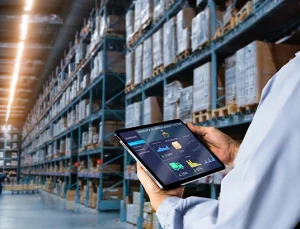- Posted on : May 14, 2024
-
- Industry : Corporate
- Tech Focus : Data & AI
- Type: Blog

As companies continue to accelerate their digital transformation journeys, every industry has begun to implement AI-enabled solutions, and new use cases come to light every day. But no matter how far a company has come in its journey, one fact remains inescapable: the cloud is the only way to unlock the full value of data. WHY? AI powered transformation has a dependency on a number enabling capabilities provided by the cloud: large storage, ubiquitous access and scaled compute capacity.
At Infogain, we’ve supported hundreds of customers in their cloud journeys. We’ve learned that cloud readiness and adoption determines how quickly transformation moves forward, and while a cloud-native approach enables greater efficiency and savings, a lot of people still focus on the wrong things.
Not all workloads are created equal.
Many customers have made a shift – containerizing workloads and pushing them to the cloud. This approach has benefits but returns diminish at some point. It’s critical to consider which applications should be rewritten to leverage the cloud provider’s native services to improve performance and save money, and which can continue to operate as they are.
Suppose you have a back-office COTS application for expense reconciliation. It will neither evolve nor scale, and the app vendor maintains it. Here the best path is to move it to the cloud in a VM environment that matches its current deployment footprint.
For an extremely complex customer-facing application with a large code base that suffers frequent outages, it’s better to avoid disrupting the customer experience and re-platform the application with no or minimal code changes. Instead, containerize the application, move the databases to managed database instances, and/or deploy the application in a managed app hosting service.
When a customer wants to significantly upgrade their offerings / services that will disrupt the business domain, it becomes a mission critical program with the potential for 10X / 100X future growth. The related applications simply must scale. In this case, rearchitect the application to create a truly cloud-native instance with planet scale capabilities.
Portability and being cloud-agnostic may not matter.
The fastest path to going cloud-native is to leverage the hyperscaler platforms. These providers are not going away, and their security and privacy controls define the state of the art. Your biggest investments will be in training and keeping people, so it might make more sense to shift the right workloads to one platform, master it, and sidestep the complexity and cost of building teams to leverage multiple platforms.
That said, portability and being cloud agnostic can become essential at specific times. Hyperscalers constantly experiment and release native services to speed up application development and deployment. These services can require very specific coding and configuration, but some of them die due to lack of adoption. Others evolve to follow the hyperscaler’s roadmap, which can create major overhead for the development team. In this case, code on an open source or community-driven framework and deploy in cloud in the managed instances for these frameworks.

Automate manual work.
It shouldn’t take people to create, test, and iterate marketing campaigns, update products and pricing, and pull reports from data. Automating these tasks gives your people time for things that move the business forward like turning insights into campaign ideas that engage users. Other potential cloud workloads include using GenAI for deployments, monitoring, and support.
Automations fall into four categories:
- Build and release automation: This CI/CD buildout automates every step from when code is checked in to the time it lands in production.
- Infrastructure as Code (IaaC): Code the cloud platform that you want to deploy and run it through automation as in build and release automation.
- Cloud Instrumentation automation: Irrespective of applications being deployed, you need guardrails for basic platform monitoring, backup policies, and access policies. These guardrails typically are scripted and deployed so the cloud environment enforces them when new resources are created.
- Ops automation: You can script patching of compute resources, DR testing, backup testing, and other operation activities in the cloud platform. Ideally these are scripted to eliminate manual effort.
Having access to on-demand storage and compute at scale lets companies unlock the value their data contains in new ways. As use cases evolve, we believe that even more workloads will move to cloud-native apps. As your transformation journey unfolds, you can begin to create the foundation you’ll need with your existing people and budgets by considering the five areas we’ve outlined above.







